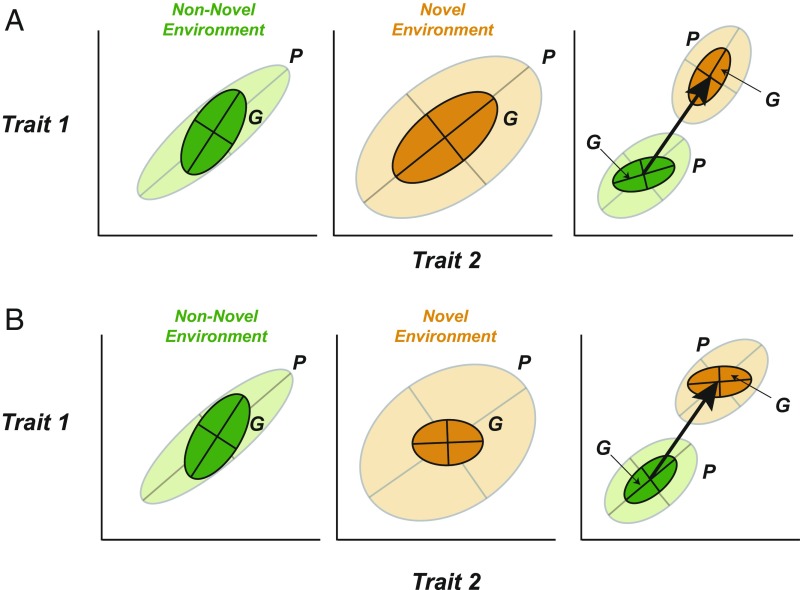Fig. 1.
Alternative scenarios describing differences in the short-term evolutionary potential of environmentally induced phenotypes. Ellipses depict multivariate phenotypic (P, light color) and genotypic (G, dark color) variation for two traits (Trait 1 and Trait 2). Arrows connecting the centroids of nonnovel (green) and novel (orange) environments are the plasticity vectors that describe the change in multivariate mean phenotype (P) between two environments. (A) Plastic responses to novel environments can be said to have high evolutionary potential if there is ample genetic variation underlying P and the vector of plastic response is well-aligned with the major axis of genetic variation in the novel environment (i.e., dark orange ellipse). (B) Plastic phenotypic responses can be said to have low evolutionary potential if there is limited genetic variation underlying P and the vector of plastic response does not align with the major axis of genetic variation in the novel environment.

